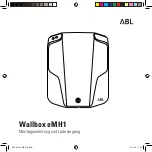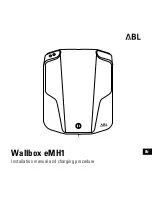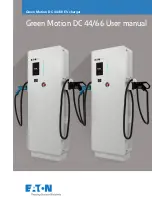
35
►
Identify the fuses on the electric PCB (Fig. 15) using the designations
E1
(Switch cabinet heating optional),
X4
(Charging point top left as viewed from the front),
X5
(Charging point top right as viewed from the front),
T2
(Charging point bottom left as viewed from the front) and
T3
(Charging point bottom right as viewed from the front).
►
Replace the defective microfuse with a suitable replacement(2.5 A, delay-action, 5x20).
The fuse holder is unlocked by applying slight pressure and a half a rotation (bayonet catch).
►
Screw on the housing cover of the charging station. Tightening torque: 1.2 Nm
►
Switch on the supply voltage.
Troubleshooting
Note
The charging station switches the four charging points off automatically if humidity or
the operating temperature in the housing exceeds or falls below the maximum value
as well as if the cover is opened.
(Technical data, page 37).
The status LEDs indicate the errors:
Error
Possible cause
Correction
The LED on the 230
V charging point
illuminates red.
Short-circuit on the charging point
(e.g. caused by a defective charge
cable or defective charger).
►
Switch off the power to the charging
station.
►
Disconnect the charger or consumers from
the charging station and vehicle.
►
If necessary, remove any objects that could
short-circuit the charging point.
►
Remedy the cause of the fault.
►
If necessary, replace the 2.5 A
(delay action) microfuse
The LED on the 230
V charging point is
permanently off
> 500 W overload detected
►
Switch off the power to the charging
station.
►
Check the load connected.
►
Remove the overload.
►
Switch the charging station back on.
..
Figure 15:
Position of the fuses






































